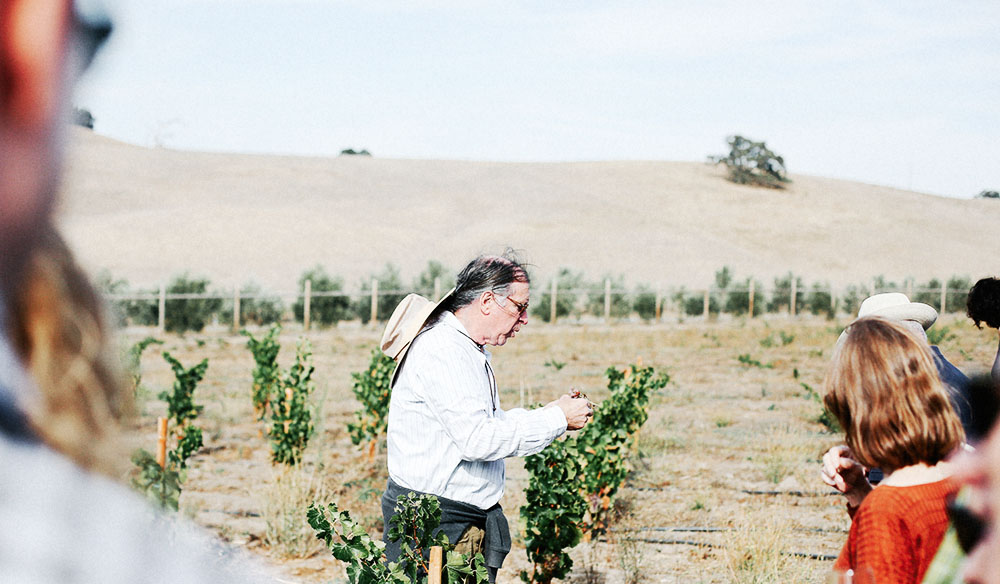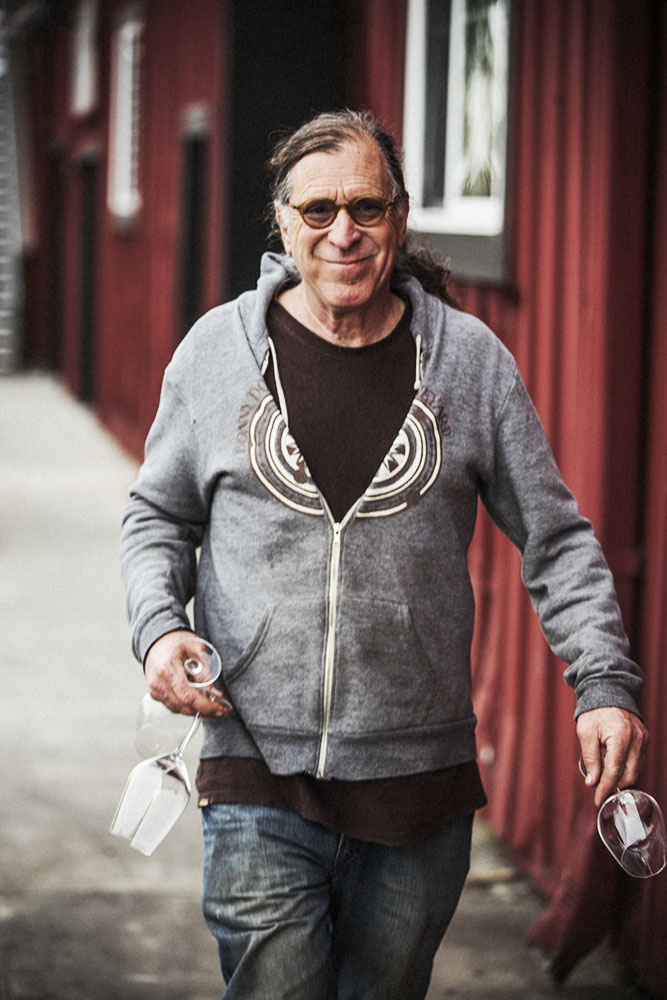
The French approach to winemaking
By W Blake Gray
Napa Valley seems to have reached its greatest heights by essentially disavowing everything the wine world learned from France. But if you look closer, French thinking has actually come to dominate even the most hyper-U.S. region of all.
This is the case throughout the world, even as we drink fewer French wines. Since the 1990s, France’s share of the world wine export market has fallen by half, according to the University of Adelaide.
But France continues to be the world’s wellspring of wine philosophy. If there’s a good idea about wine marketing, it probably comes from California. And if there’s a successful idea about making a beverage from wine, like Bourbon-barrel-aged wines or wine coolers, it probably comes from California.
But if there’s a good idea about making fine wine, if you look far enough back, it probably originated in France.
These days that philosophy runs to low-intervention and natural wines. Just over a decade ago, natural wine was a fringe movement led by vignerons in unheralded regions of France. Now, whatever you think of the wines themselves, there’s no denying that the concept has gone viral.
You can even find natural wines being made in places where almost all wine is corporate, like Chile. There are some millennial drinkers who think natural wines are the natural order of things. Glou glou — a French expression for “quaffable” — has conquered the English-speaking hipster world.
But let’s say hipster wines give you an earache, and you like those big Napa Cabs. Fine. Let’s take a look at French influence there.
The 1980s were a “lost decade” for Napa Cabs for two reasons. One, most wineries completely bought into the primacy of the winemaker, rather than the source of grapes. And two, many wineries followed a ripeness formula — from France — harvesting at sugar levels that indicate ripeness in Bordeaux. Because California is much warmer and sunnier, those grapes were underripe.
In the 1990s, Napa Cabs really came into their own. Winemakers began harvesting grapes later and the wines turned out better. Many at the time said they were finally loosening the shackles of the Bordeaux way of thinking.

This uber-geeky geology lesson is profoundly related to what makes great wine great.”
Randall Grahm
However, the 1990s in California also saw the rise of the cult Cabernets, and those are all based on vineyards. Screaming Eagle, Harlan Estate, Colgin, Araujo — these pricey bottles are all based on the idea that a piece of land is special, and produces a special wine.
This is the epitome of French thinking about wine, in every era: terroir is paramount. Terroir is such a French concept that there isn’t even a great English translation for the word. In fact, I have to use 18 words to explain it: “the combination of soils, climate and other environmental factors that give wine grown on the land its identity.”
Terroir wasn’t accepted for decades in North America, and even today, wine corporations like to disavow it, because they want you to buy multi-region blends, which are cheaper and safer to produce, as a bad year or a traumatic event, like wildfires, in one small area will not stop the brand from reaching store shelves every year.
Wine corporations are not alone in their disdain for terroir. In 2016, UC Davis professor Mark Matthews published a book with the title Terroir and Other Myths of Winegrowing. Myth or philosophy, the overwhelming majority of producers of fine wine believe in it.
“As a young and impatient pup, I got terribly bored when French or Italian winemakers would gas on — and on and on — with a geology lesson about the history and distinctiveness of their soils, when I just wanted to taste the juice and keep things moving,” says California winemaker Randall Grahm. “I have since learned that this uber-geeky geology lesson is profoundly related to what makes great wine great.”
You can’t credit biodynamic farming to France: that came from a German philosopher. And organic farming was first conceived by British botanists.
But dry farming as a winegrowing philosophy: that is very French, to the point that some French wine regions actually outlaw irrigation. To be sure, there’s more than a little hypocrisy to it from a New World point of view, as France gets plenty of rain during the growing season while California, Argentina and Australia, among other regions, do not. That said, dry farming is increasingly popular even in dry New World regions and French vignerons are the biggest advocates.
“While still nobody really understands the mechanism of the phenomenon of ‘minerality’ or ‘terroir,’ there is no question that grapes that are dry-farmed, organically or biodynamically farmed, and have lots of roots relative to a small volume of fruit, which is the case with most of the great European crus, will produce wines that have a lot more complexity and flavour interest,” Grahm says.
The French are also the originators of the idea that great wine is made in the vineyard. That said, there is also a fair amount of winemaking — not viticultural — theory that comes out of France, especially when it comes to the mystical. If you can’t explain why something makes the wine better but you believe that it does, that probably came from France.
Take the concrete egg. These are trendy all over the world in high-end wineries. The idea is that the egg shape will create a flow inside, circulating nascent wine through the cap of grape skins and allowing a gentler fermentation process.
Rhône vigneron Michel Chapoutier commissioned the first concrete egg in 2001. Recent research has shown that the eggs may be less effective at fluid dynamics than enthusiastic believers have stated, but they still help preserve fruit flavours in the wine because concrete is so effective as insulation.
That’s another French idea: concrete tanks for fine wines. Most older wineries disavowed concrete tanks built decades ago, declaring that oak barrels (another French concept, but an old one) were the modern way to ferment wine. But Christian Moueix, proprietor of Château Pétrus, declared nearly 20 years ago that he preferred concrete for his best wines, and the cachet of one of the world’s most famous wines made concrete cool again.
Here is one of the most French concepts of all: the idea that a wine should have typicity: that it should resemble an archetype of wines from a region. Not all Puligny-Montrachets should taste the same, but they should all taste like a Puligny-Montrachet.
You see echoes of that all over the wine world: that a Santa Rita Hills Pinot Noir, or a Finger Lakes Riesling, or a Niagara Peninsula Cabernet Franc, should have a recognizable taste profile.
“French winemakers still largely embrace the value of typicity and restraint,” Grahm says. “They are generally, not, in the parlance of my Silicon Valley neighbours, ‘disruptors.’ A great wine from a region expresses the region’s distinctiveness and character: its Platonic form. While this is a deeply conservative position, and AOC rules can sometimes be quite reactionary — indeed they seem to work against the whole concept of evolution and experimentation — the idea of preserving identity is still for me quite compelling.”
This article may make me seem like a Francophile, but really I’m not. Here’s proof: I think the English make excellent cheese, and I don’t really like croissants. And I don’t smoke tobacco.
I live in California, and I drink California wine more than a third of the time. I love California wine. We have great terroir. When you find a wine made by winemakers who believe that great wine is made in the vineyard, California wines are spectacular. They can have a fruit-forward, sunny taste profile that can’t be matched by France. The grapes here are special.
But letting those special grapes shine without trying to bulk them up with new oak or daily punchdowns: that’s an imported idea.
“Great French winemakers are generally correctly humble about their own role in the process,” Grahm says. “‘C’est pas moi; c’est le vignoble.’ And they’re right.”
